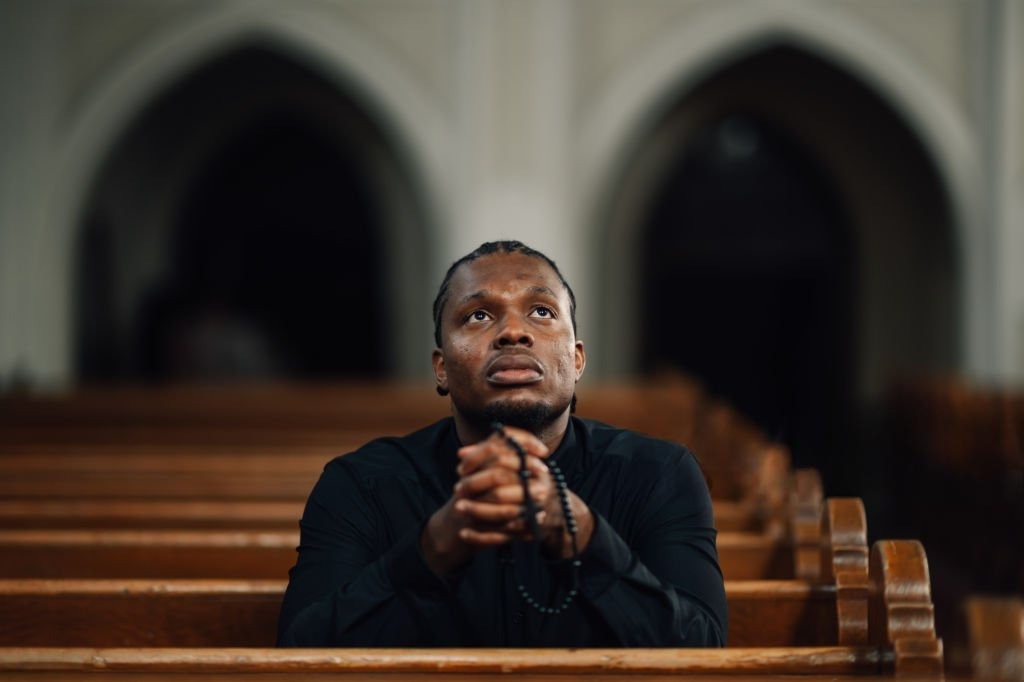Did Jesus Meditate? Exploring the Spiritual Practice of Christ
Meditation is often associated with Eastern religions like Buddhism and Hinduism. But a growing number of historians, theologians, and spiritual researchers are asking an intriguing question: Did Jesus meditate?
This question isn’t just philosophical—it touches on the roots of Christian spirituality, prayer, and mindfulness. Across centuries, believers and scholars have debated how Jesus cultivated his inner peace, wisdom, and divine connection. And with modern Christians increasingly exploring meditation as part of their faith, understanding Jesus’ possible meditation practices has become more relevant than ever.
In this article, we’ll explore whether Jesus meditated, what historical evidence suggests, how His practices relate to modern meditation, and what this means for Christians today.
The Missing Link Between Christianity and Meditation
For many Christians, meditation sounds like something foreign—rooted in Buddhist monasteries or yoga studios, not in the Bible.
This perception has created a gap: while meditation offers proven mental, emotional, and spiritual benefits, many Christians feel uncertain or even guilty about practicing it.
They ask questions like:
- Is meditation compatible with Christian faith?
- Did Jesus actually meditate, or was His prayer something completely different?
- Can Christians practice mindfulness without going against the Bible?
These doubts are not new. For centuries, Christian leaders have debated how to define “meditation.” In the Western world, it has often been replaced by “prayer,” while in the East, meditation evolved as a systematic practice of self-awareness and divine union.
But here’s the challenge: if Jesus truly meditated, then meditation might not be a foreign idea—it could be a core part of Christian spirituality.
Why This Question Matters
Understanding whether Jesus meditated isn’t just about history—it’s about reclaiming a spiritual tool that may have been forgotten.
Today, millions struggle with anxiety, stress, and lack of focus. According to a 2022 study by the Pew Research Center, nearly 30% of Americans describe themselves as “spiritual but not religious.” Many of them are turning to meditation for peace of mind.
Meanwhile, practicing Christians often report that prayer feels repetitive or distracted. A 2021 Barna Group study found that 40% of Christians admit struggling to “feel connected” when praying.
If Jesus meditated, then His approach might hold the key to transforming how modern Christians pray, reflect, and connect with God.
This is where exploring the historical and biblical evidence becomes essential.
Understanding Jesus’ Meditation Practices
Let’s discuss what the Bible, history, and modern research reveal about whether Jesus meditated.
1. Meditation in Bible Language
The word “meditate” appears several times in the Old Testament. In Hebrew, the terms “hagah” (to murmur, reflect, or ponder) and “siyach” (to muse or commune) were often used to describe deep contemplation.
For example:
- “But his delight is in the law of the Lord, and on his law he meditates day and night.” — Psalm 1:2
- “May the words of my mouth and the meditation of my heart be pleasing to you, O Lord.” — Psalm 19:14
When Jesus was born into Jewish tradition, this meditative reflection on Scripture was already central to spiritual life. Jewish rabbis, prophets, and teachers practiced “hitbodedut”—a form of solitude and contemplation aimed at encountering God personally.
Therefore, Jesus, raised in this environment, would have been familiar with meditative prayer from a young age.
2. Jesus’ Practice of Solitude and Silence
The Gospels describe Jesus frequently withdrawing from crowds to pray in quiet places.
- “Very early in the morning, while it was still dark, Jesus got up, left the house, and went off to a solitary place, where he prayed.” — Mark 1:35
- “But Jesus often withdrew to lonely places and prayed.” — Luke 5:16
These verses reveal more than simple prayer—they suggest a discipline of silence and solitude.
In modern psychological terms, such withdrawal reflects mindful contemplation, allowing deep connection with God beyond spoken words.
Historians like Dr. Marcus Borg, a New Testament scholar, argue that Jesus practiced a contemplative form of prayer that mirrors modern meditation. Borg describes it as a “form of inner communion that transcended verbal language.”
3. Jesus’ Forty Days in the Wilderness
One of the most powerful examples comes from Jesus’ forty days in the wilderness (Matthew 4:1-11).
During this time, He fasted, remained alone, and faced temptation—all while maintaining awareness and communion with God.
This aligns closely with meditative retreats seen in other traditions, where spiritual seekers withdraw to reflect, fast, and seek enlightenment.
Psychologically, the wilderness experience represents deep introspection, mental discipline, and spiritual transformation—key components of meditative practice.
4. The “Kingdom of God Within You”
In Luke 17:21, Jesus says, “The kingdom of God is within you.”
This statement is deeply meditative. It points inward, suggesting that divine experience isn’t only external or ritualistic but internal—found in awareness and stillness.
Christian mystics like St. Teresa of Ávila, Thomas Merton, and Meister Eckhart interpreted such teachings as evidence that Jesus encouraged inner stillness and self-awareness, akin to meditation.
Merton, a 20th-century Trappist monk, even compared Christian contemplation to Buddhist mindfulness, suggesting both aim for “union with the divine center.”
5. Similarities Between Jesus’ Prayer and Meditation
When comparing Jesus’ prayers to Eastern meditation, several parallels emerge:
| Jesus’ Practice | Meditative Element | Biblical Evidence |
| Solitary prayer | Mindful silence | Mark 1:35, Luke 5:16 |
| Focused breathing and stillness | Physical awareness | Implied during fasting and prayer |
| Repetition (e.g., Lord’s Prayer) | Mantra-like focus | Matthew 6:9–13 |
| Inner communion | Transcendent awareness | John 17:21 |
| Non-attachment to ego | Detachment from worldly concerns | Matthew 6:25–34 |
While these parallels don’t prove Jesus learned meditation from Eastern sources, they show He naturally embodied meditative principles that promote awareness, compassion, and peace.
6. Possible Eastern Influences
Some researchers propose that Jesus may have encountered meditative traditions directly.
According to a controversial theory, Jesus might have traveled east during the so-called “Lost Years” (ages 12–30), possibly visiting India or Tibet. Sources like “The Unknown Life of Jesus Christ” (1894) by Nicolas Notovitch claimed to have discovered ancient scrolls in a Tibetan monastery describing a figure named Issa, resembling Jesus, who studied Eastern philosophy.
However, mainstream historians question these claims due to a lack of verifiable evidence.
Still, the similarity between Jesus’ emphasis on compassion, inner peace, and detachment and the teachings of Eastern traditions like Buddhism and Hinduism continues to spark curiosity among scholars.
7. Early Christian Meditation Traditions
Even if Jesus didn’t study in the East, His followers clearly practiced forms of meditation.
The Desert Fathers and Mothers (3rd–5th centuries) retreated into the Egyptian desert for silent prayer and contemplation. They sought direct experience of God through stillness—a continuation of Jesus’ own solitude in the wilderness.

They developed techniques similar to modern meditation:
- Focusing on a short verse or “sacred word.”
- Regulating breathing.
- Sitting in silence for extended periods.
This evolved into the “hesychasm” movement in Eastern Christianity—a meditative practice centered on the “Jesus Prayer” (“Lord Jesus Christ, Son of God, have mercy on me, a sinner”).
Thus, meditation has long been part of Christian tradition, inspired by Jesus’ own contemplative lifestyle.
Scientific and Historical Insights
Modern science supports the mental and spiritual value of meditative prayer.
A 2016 study in the journal Social Cognitive and Affective Neuroscience found that spiritual meditation activates brain regions linked to empathy and emotional regulation. Another study by Harvard Medical School (2018) revealed that regular meditative prayer lowers stress and improves concentration.
If Jesus practiced such contemplative awareness daily, it could explain His extraordinary emotional balance, compassion, and clarity under extreme pressure.
Historically, scholars like John Main and Thomas Keating revived these contemplative traditions in modern Christianity through the Centering Prayer Movement, encouraging believers to rediscover silence as Jesus did.
What This Means for Modern Christians
If we accept that Jesus meditated—or at least practiced deep contemplation—then meditation is not un-Christian. It’s a return to Christ’s own example.
Practical Takeaways:
- Meditation Deepens Prayer:
Rather than replacing prayer, meditation helps believers pray with full awareness and presence. - Silence Is Sacred:
Jesus sought solitude before major decisions (Luke 6:12-13). Modern Christians can emulate this by setting aside silent moments for discernment. - Mindfulness Strengthens Faith:
Staying present during prayer enhances gratitude and reduces distractions. - Meditation Fosters Compassion:
Jesus’ calm responses to hostility show mastery of emotional regulation—something meditation helps cultivate. - You Don’t Need to Abandon Christianity:
Christian meditation focuses on the presence of God rather than emptying the mind. It’s about being with God, not detaching from Him.
The Centering Prayer Movement
To see how Jesus’ meditative example is being revived, consider the Centering Prayer Movement, founded in the 1970s by Father Thomas Keating.
This movement encourages silent prayer centered on a single sacred word (like “peace” or “Jesus”) to rest in God’s presence.
Keating described it as “consenting to God’s presence and action within.”
A 2014 study published in the Journal of Religion and Health found that participants who practiced centering prayer for 20 minutes daily reported lower anxiety and greater spiritual satisfaction.
This approach mirrors how Jesus withdrew to quiet places—reflecting the same balance of silence, awareness, and divine focus.
Common Misunderstandings
Many Christians fear that meditation contradicts Scripture. But this usually stems from confusing Eastern empty-mind meditation with Christian contemplative prayer.
Jesus never instructed His followers to abandon awareness—He guided them toward inward connection.
When He said, “When you pray, go into your room, close the door and pray to your Father, who is unseen” (Matthew 6:6), He described an inward, meditative process, not loud or performative prayer.
Therefore, meditation doesn’t replace faith—it enriches it.
Conclusion
While the Bible doesn’t use the word “meditation” in the modern sense, the evidence—both scriptural and historical—strongly suggests that Jesus practiced deep contemplation, silence, and mindful communion with God.
His time in solitude, His inner stillness, and His ability to respond with compassion under pressure all reflect the fruits of meditative awareness.
For Christians today, rediscovering this ancient practice isn’t about blending religions—it’s about returning to the heart of Christ’s own spirituality.
By learning from Jesus’ example of silent reflection, modern believers can find the same peace, clarity, and connection that defined His life.








В случае если вы разрабатываете поход в Париж и мечтаете окунуться в настроением настоящих блошиных рынков, определенно заезжайте в такие места, как блошиные рынки Парижа на Монмартре и масштабный блошиный рынок на Ванв. Это отличное место для фанатов винтажа и антиквариата, где можно обнаружить неповторимые сувениры и познакомиться с современной культурой города. Также, если хотите узнать, как доехать из Парижа в Версаль, тут тщательно описаны многочисленные варианты транспорта безопасные районы парижа .
Дополнительно, призываю обратить внимание на свободные музеи Парижа, которые доступны для прогулок в первое воскресенье ежемесячного месяца – это идеальный способ присоединиться к искусству без ненужных затрат. Для ценителей архитектуры и истории не пропустите знаменитые достопримечательности, такие как Руонский собор и дворец Трокадеро, а также округа 11 и 15 округ Парижа, которые рассматриваются одними из самых спокойных. Такой программа предоставит шанс сделать ваше вояж многогранным и легким.